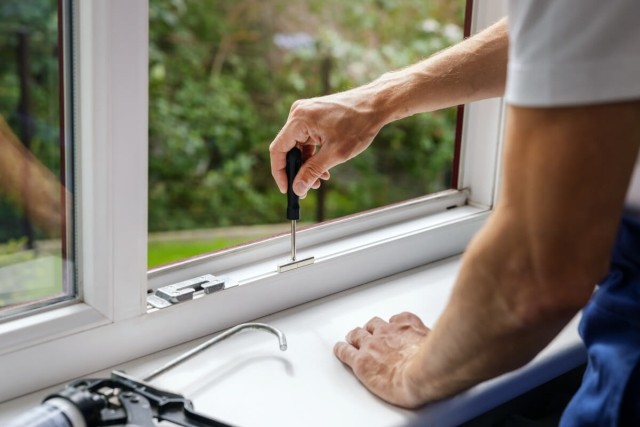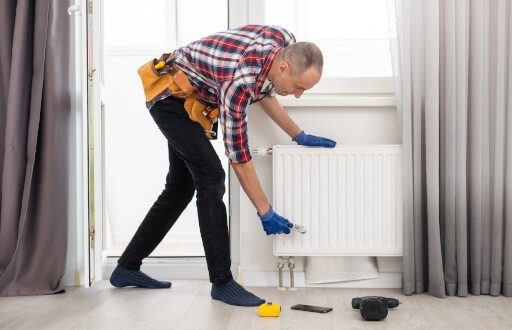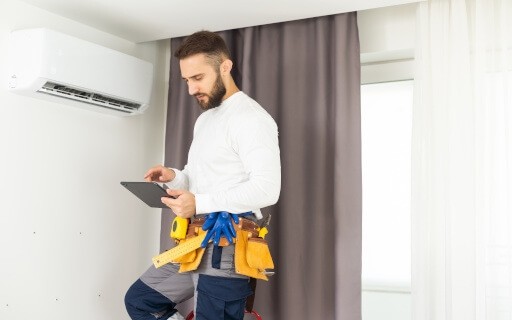There are few maintenance items that take priority in your rental property. Some of the main issues to keep an eye on and fix immediately are HVAC issues, electrical gremlins, and pests. But there’s one specific pest to keep a special eye out for: termites. No landlord wants to deal with a termite problem no matter how minor, but if you suspect you have termites or need to handle a current infestation, keep reading.
What Termites Look Like and How to Identify Them
Termites can loosely resemble ants, but there are a few key identifying features to look for. Adult termites vary greatly in looks between the four species, but they will either be yellowish or white in color. The head will be darker in color than the abdomen, and all termites have prominent pincers – a key feature to look for. Some may also have wings! Okay. We’re done with looks, I promise.
Termites live in large colonies, so if you stumble across the critters in large numbers that’s a good indicator that you’re dealing with a termite problem. Don’t be fooled if you only find one lone termite, however. The colony could be just feet away.
What Are Signs of Termite Damage?
The signs of a termite infestation will most likely present themselves before the actual pests. So, what should you look for if you suspect termites have taken up unwelcome residence in your rental property?
Exterior wall damage
If you own an old house with wooden siding, you’re at an especially high risk for termites. Take a look at the siding and check for crumbling, dry, or overly wet wood. Listen for hollow sounding planks as you knock on suspected areas.
Sagging floors
The prime locations for termites are the main structural beams in a home. Once they get there, you’ll notice serious signs like sagging floors as the structure of the house begins to weaken.
Drooping ceilings
Again, as termites make their way through a home’s foundational structure, the main supports for the ceiling begin to slacken. If you notice sagging ceilings and any other of these preceding symptoms, you might be dealing with termites.
Drywall pinholes
Another sign of termites that may go unnoticed in the interior of your home are the entry and exit points for the pests. These can look like tiny pinholes – barely bigger than pencil lead – near the baseboards in your drywall.
Sudden insect problems
Not all the signs of a termite infestation are found in the structure of your home. If you suddenly notice several flying insects in your home, don’t dismiss them as drain flies or ants. These could be the adult termites swarming to look for their next nesting place.
Who Is Responsible for Dealing with Termites?
Tenant laws vary from state to state, but the responsibility of pest control – namely termites – almost always falls on the landlord. This is because termites aren’t influenced by the actions of tenants, whereas other pests like bedbugs, rats, and roaches can be attracted to less-than-ideal living conditions cause by the renter(s).
As a landlord, you will most often be responsible for handling termite prevention and control and be responsible for repairing any damage done to the property by the termites. In rare cases, a landlord can explicitly defer all pest control to the tenant in the lease, but it’s very uncommon. Encourage your tenant to report any signs of termites that they may see. With our online maintenance platform, tenants can easily submit maintenance requests online (including requests for pest control) to address issues early.
How to Get Rid of Termites
If you’ve identified a termite problem in your rental property, there are two ways to go about dealing with these pesky critters. The route you take is largely dependent on how bad the infestation is, however.
Do it yourself
A DIY termite removal job is advisable if you’ve identified a relatively small termite problem, meaning you’ve found one or two affected pieces of exterior trim or structure. The first step is to use a liquid poison on the affected areas. Then, place bait traps near the affected areas and around your yard to lure the termites away. You’ll then want to replace any affected wood and apply a liquid termite deterrent to any structure that remains.
Hire a professional
If you’ve found termites in the main structural points of your home or identified a large-scale infestation in the walls, it’s time to hire the professionals. A dedicated termite exterminator will use many of the tactics mentioned above, but they can also use heat to drive the insects out. They’ll also be able to strategically place bait traps and identify key areas to apply a deterrent to keep the termites from coming back. Large scale termite extermination can be expensive, so keep that in mind.
How to Prevent Termites
Whether you’re concerned about preventing another termite problem or you just want to cover all your bases, here’s how to prevent termites in your rental property.
Use bait traps around your yard
Termite bait isn’t just great for treating a problem, it can also be used to stop one form forming. If you keep wood in your yard for an outdoor fireplace or your property has wood siding, strategically placed bait traps will keep termites from getting too close to your home.
Use treated wood for new construction
At the hardware store, you can either buy untreated or treated lumber. Treated lumber has been infused with preservative chemicals and other agents to prevent rot and deter wood-eating pests. If you plan on building some raised beds, a fence close to your home, or a deck, consider using treated wood.
Control standing water
Some species of termites love damp wood, so if drainage around your house is less than ideal or your deck stays damp after it rains, it’s time to remedy that problem. Install gutters or any other drainage solutions and seal your deck to prevent rotting wood from attracting termites.
“Termites” can be a scary word to hear in relation to your rental property. If a termite problem goes unchecked, you could be out a good chunk of change or worse. But don’t fret! As long as you stay vigilant and take the proper precautions, you should be able to prevent a termite problem, or even handle a small one yourself.











